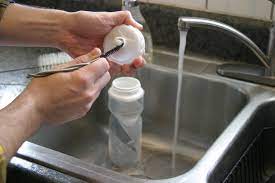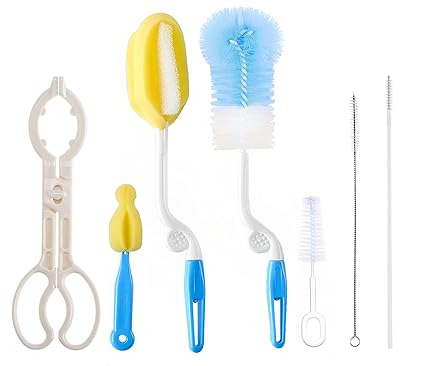Introduction
Maintenance of Water bottles have become indispensable companions in our daily lives, keeping us hydrated on the go, at work, or during our outdoor adventures. However, many of us overlook the significance of regular maintenance for these trusty companions. In this article, we will delve into the topic of water bottle maintenance and why it’s essential for the longevity, safety, and performance of your hydration vessel.
Section 1: The Basics of Maintenance of Water Bottle

1.1 Cleaning Your Water Bottle
Regular cleaning is the cornerstone of proper water bottle maintenance. The inside of a water bottle can be a breeding ground for bacteria and odors if not cleaned regularly. Use warm, soapy water and a bottle brush to thoroughly clean the interior of your bottle. Pay extra attention to any nooks, crannies, and the cap. Rinse it out thoroughly to ensure no soap residue remains. This basic cleaning routine should be performed after every use to keep your bottle fresh and safe.
1.2 Inspect for Wear and Tear
Inspect your water bottle for signs of wear and tear. This includes checking for cracks, scratches, or any damaged seals or gaskets. A damaged water bottle can lead to leaks, making it less effective and potentially wasting water. If you spot any issues, address them promptly by either repairing or replacing the bottle.
Section 2: Why Maintenance Matters
2.1 Safety First
Proper maintenance of your water bottle ensures its safety. By regularly cleaning and inspecting your bottle, you reduce the risk of contamination and the growth of harmful bacteria. Bacteria, mold, or mildew can thrive in damp, dark, and confined spaces, making your water bottle a prime candidate for these unwelcome guests.
2.2 Longevity and Sustainability
Regular maintenance prolongs the life of your water bottle. Investing in a high-quality, reusable bottle not only reduces your environmental impact but also saves you money in the long run. By taking care of your bottle, you can extend its lifespan and prevent the need for frequent replacements.
2.3 Flavor Preservation
Over time, your water bottle can start to develop a lingering taste or odor from previous beverages, even after thorough cleaning. This can impact the flavor of your water or other drinks. Proper maintenance, such as scrubbing and rinsing, ensures your water stays fresh and free from any unwanted flavors.
Section 3: Tips for Effective Water Bottle Maintenance
3.1 Use a Bottle Brush
A bottle brush is an indispensable tool for thorough cleaning. Its long handle and bristles can reach deep into the bottle to scrub away residue and bacteria that regular sponges or dishwashing brushes might miss. Invest in a good-quality bottle brush for effective maintenance.
3.2 Choose the Right Cleaning Agents
While dish soap is usually effective for cleaning water bottles, you should avoid using harsh chemicals or abrasive cleaners. Stick to mild detergents and avoid using bleach or other strong chemicals that may damage the bottle or leave a residual taste.
3.3 Allow for Proper Drying
After washing your water bottle, leave it open to air dry completely. This helps prevent the growth of mold or mildew that can occur when moisture is trapped inside. Keeping your bottle dry between uses is a simple but effective maintenance step.
3.4 Regularly Replace Seals and Gaskets
If your water bottle has replaceable seals or gaskets, be sure to replace them as needed. These components play a crucial role in preventing leaks and maintaining the bottle’s integrity. Check with the manufacturer for recommended replacement intervals.

Section 4: Special Considerations for Different Types of Bottles
4.1 Stainless Steel Bottles
Stainless steel water bottles are known for their durability and resistance to retaining odors and flavors. Regular cleaning remains essential for maintaining hygiene, but stainless steel’s non-porous nature makes it easier to clean than some other materials.
4.2 Plastic Bottles
Plastic water bottles are lightweight and affordable, but they can be more susceptible to absorbing odors and flavors. To prevent this, it’s crucial to clean them diligently, paying particular attention to the cap and any plastic components.
4.3 Glass Bottles
Glass water bottles are an eco-friendly option, but they are more fragile than other materials. Handle them with care to avoid chips or cracks. Regular cleaning will help maintain their pristine appearance and prevent the buildup of residue.
Section 5: The Bottom Line on Water Bottle Maintenance
In conclusion, water bottle maintenance is an often-overlooked aspect of owning a reusable hydration vessel. Proper maintenance involves regular cleaning, thorough inspection, and replacing worn-out components. By taking these steps, you can ensure the safety, longevity, and flavor preservation of your water bottle. Whether you own a stainless steel, plastic, or glass bottle, the principles of maintenance apply universally. Embrace the responsibility of caring for your water bottle, and it will reward you with years of reliable service and sustainable hydration.
So, the next time you reach for your trusty water bottle, remember that a little maintenance can go a long way in ensuring it remains a safe and dependable companion on your daily journeys.
You Might Also Like This post.
